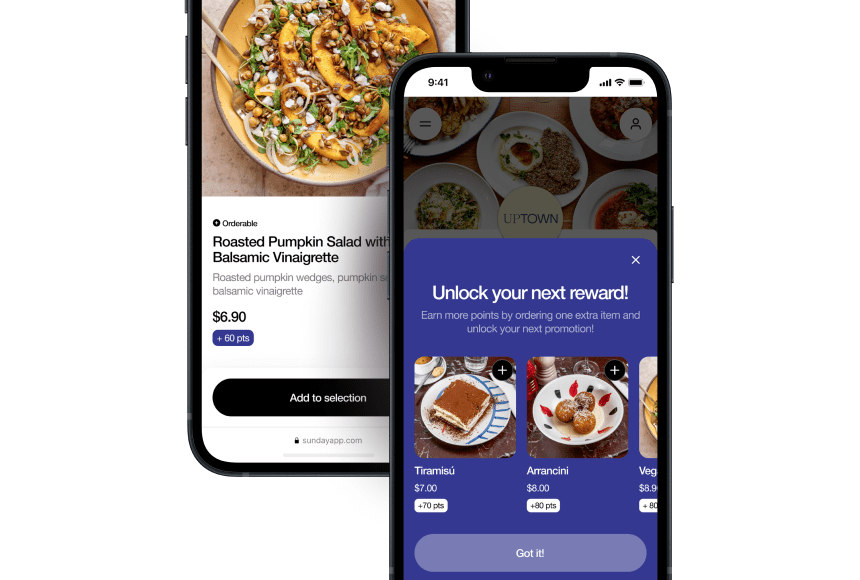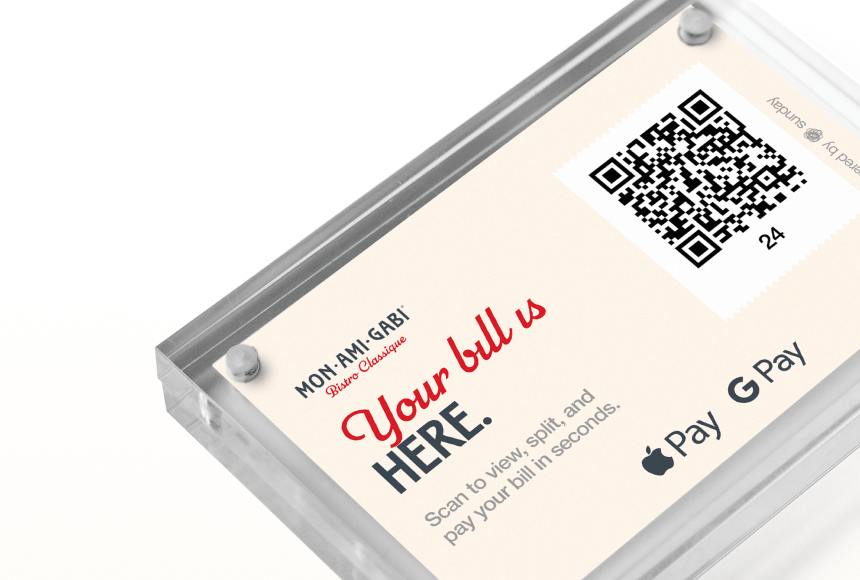
Choosing the Right Payment Approach for Your Restaurant
How Payment Technology Shapes the Dining Experience
Picture yourself standing in your restaurant’s bustling dining area. Customers are finishing their meals, patting their stomachs, and reaching for their wallets. But these days, many of them might be wondering if they can pay with a quick tap, QR code, or mobile device rather than dealing with old-fashioned card swipes. Does this mean it’s time to upgrade your payment setup? For anyone juggling day-to-day operations in a hectic eatery, the decision between a smart terminal and a traditional card machine can feel like choosing a new chef’s knife: it’s best to weigh your options carefully.
In the world of restaurants, where service speed and seamless guest experience often determine your online reviews, payment technology is pivotal. Some owners opt for the tried-and-true ways—old-school card readers that have been around for decades. Others go for the more recent, playful approach of smart terminals that do more than just process a credit card. Wondering what the real differences are and how they might affect your bottom line? Let’s dive in and dissect every angle.
The Fundamental Distinction: Traditional vs. Smart
Before we delve into bells and whistles, let’s clarify the basic differences:
- Traditional Card Machine: A standalone terminal designed primarily to process payments via magnetic stripe, chip, or contactless card transactions. These devices usually have a small digital display, numeric keypad, and a built-in or connected printer to generate paper receipts.
- Smart Terminal: A newer generation of payment device that runs on advanced software, often resembling a smartphone or tablet interface. By connecting to the internet, a smart terminal can manage transactions, integrate with third-party apps, track sales trends, handle loyalty programs, and more—all from a single interface.
Think of it like comparing a vintage landline phone to the latest smartphone. Both let you make a call, but only one puts an entire office in your pocket.
Speed, Efficiency, and Table Turns
Ever had a rush so intense that you felt like you were in a high-speed cooking show, racing to keep everything in sync? One area where a smart terminal might give you an edge is speed. By the time a server finishes a brief conversation with a customer, a modern device can prompt for the tip, confirm the total, and finalize the payment—sometimes without the server even leaving the table. This rapid turnaround can sometimes shave minutes off each transaction, meaning more time for new customers to dine.
Many smart terminals can also link directly to a restaurant’s Point of Sale (POS) system, automatically updating checks and splitting bills without manual data entry. This synergy between the device and your larger operational platform minimizes errors and helps staff handle multiple tables more efficiently. According to recent insights from the National Restaurant Association, efficiency gains from integrated payment solutions are a top driver for post-pandemic tech adoption in restaurants.
Enhanced Guest Experience: Where Impressions Matter
A positive guest experience can be as delicate as a perfectly balanced sauce. Everything from the greeting at the door, to the final check, forms a collective impression. Here’s how each payment type measures up in that final act:
- Traditional Card Machine: The server brings the machine to the table or the guest walks to the counter. The customer slides or inserts the card, waits for approval, then waits again for the receipt to print. Quick enough in quiet moments, but during high-volume rushes, lines or lengthy waits might occur.
- Smart Terminal: Customers have the option to pay at the table, pay by QR code, or even tip digitally—often with an easy, user-friendly interface. The result? A faster, more interactive checkout that can leave your patron with a final positive memory as they head out the door.
Adding a QR code payment option, like sunday does, can let busy diners pay at their own pace, handle separate checks, and even leave a tip or review without feeling rushed. In the digital era, a speedy and smooth payment process often translates into a better review and a willingness to come back.
Data Insights and Inventory Tracking
The difference between a profitable restaurant and one that struggles often lies in data—knowing which dishes sell best, which shifts need more staff, and what daily revenue trends look like. Traditional card machines can provide you with the dollar amount and maybe a record of card types. But they won’t typically give you a breakdown of your best-selling appetizers or the times of day you see the most dessert orders.
Meanwhile, a smart terminal, fully synced with the main POS system, can provide you with a real-time view of:
- Itemized sales per server
- Peak dining hours
- Tip trends across different shifts
- Inventory updates to avoid menu outages
Instead of monitoring each area manually (like scanning the stock in your freezer at midnight to guess tomorrow’s needs), a smart terminal can automatically log every sale and update relevant data. The result is less guesswork and more actionable insights, giving you the knowledge to adjust your labor, purchase orders, and menu offerings with confidence.
Security and Fraud Prevention
Security in the restaurant business goes beyond locking the front door after closing. It includes safeguarding your customers’ credit card information and ensuring that your own finances aren’t compromised by fraudulent activity.
Traditional card readers use encrypted data transmissions, which is typically secure. But older models might lack more advanced security features like end-to-end encryption or tokenization that are becoming a standard part of newer payment solutions. Smart terminals often leverage the latest hardware and software security measures, automatically updating firmware to address potential vulnerabilities.
Chip and signature or chip and PIN technologies, contactless (NFC) payments, and end-to-end encryption are all becoming more mainstream. In fact, Federal Reserve reports highlight that as contactless payments rise, so does the emphasis on layered security features. If you’re looking to reassure customers while protecting your revenue stream, advanced security is a major selling point for modern devices.
Ease of Integration with Restaurant Operations
A restaurant is a complex ecosystem—front-of-house staff, kitchen crew, ordering platforms, loyalty programs, delivery partnerships, and more. Integration means fewer headaches for you:
- One-Stop Setup: Smart terminals can hook directly into your POS, loyalty system, and even your online ordering solutions—eliminating the need to manage multiple interfaces.
- Menu Management: Update your menu in one place, and changes automatically sync across all your devices, from your online ordering site to your smart terminal at the table.
- Employee Management: Some advanced terminals let you track server performance and even handle staff scheduling. Imagine discovering that Table 12 always leaves bigger tips for a particular server, then using that data to train new hires.
A standard, traditional machine, in contrast, often works as a standalone piece of hardware. You take a payment in one device, then record that transaction separately for your daily sales records. The double entry can be time-consuming and prone to errors, especially in a busy restaurant environment.
Initial Costs vs. Long-Term Investment
Let’s talk money. Adopting new technology often raises questions like “How much is this going to cost?” or “Will my staff need extra training?” Traditional card machines can seem cheaper at the outset. But if you consider a device’s lifespan, possible maintenance fees, and whether you pay extra for advanced functionalities (like gift card processing), the difference might narrow rather quickly.
Smart terminals, on the other hand, might come with higher upfront or monthly fees, but bring a comprehensive suite of features that can streamline operations across the board. If using a smart terminal allows you to track and reduce shrinkage, optimize labor schedules, push promotions to diners, and integrate with online ordering, the total return on investment can be far greater. Having all these tools in one solution may cut down on the need to pay for multiple, separate systems.
It’s crucial to perform an honest cost-benefit analysis, factoring in:
- Hardware and setup fees
- Transaction costs and processing fees
- Monthly software subscriptions
- Maintenance, updates, or replacement costs
- Time saved and data-driven revenue opportunities
Training and Adoption in a Busy Kitchen
We’ve all heard kitchen horror stories about complicated tech that slows everything to a crawl. You don’t want to add something that frustrates servers more than it helps them. Yet, in many cases, today’s updated systems are strikingly intuitive—if your employees are comfortable navigating a basic smartphone, they’ll likely adapt quickly to a smart terminal.
Training sessions can be minimal, and the best solutions offer online tutorials or in-person demos to get your team up to speed in no time. Traditional card machines, by comparison, are certainly straightforward for finalizing a single sale. But ask yourself: “How many extra tasks do my employees have to do after the payment is processed?” The fewer manual processes they face, the easier it is to reduce human error (like punching in the wrong total) and keep the kitchen moving at a steady clip.
Building Loyalty and Managing Promotions
Many of today’s restaurants find that loyalty programs boost repeat business. Whether it’s a free dessert after ten visits or a special discount for birthdays, customers enjoy perks. Smart terminals are often set up to tie directly into these perks:
- Prompting a sign-up for your loyalty club at checkout
- Automatically adding reward points after each transaction
- Offering targeted, personalized promotions based on a diner’s purchase history
Traditional card machines, however, typically don’t have an easy link to these systems. If you want to promote loyalty programs or gather customer data for future marketing campaigns, you’re often stuck with separate sign-up sheets or manual data entry. That’s not only inefficient, but it also poses a higher risk of data entry errors.
Looking beyond loyalty, modern systems can even detect patterns, like noticing that a guest often visits on Friday nights and orders the house special. Your server can gently suggest a new arrival or upsell a dessert, confident the diner will appreciate the recommendation. Personal touches like these are what turn first-time visitors into regulars.
Embracing Modern Payment Methods
Restaurant patrons today want variety. They might pay with:
- Credit and debit cards
- Mobile payment apps
- Contactless “tap to pay” cards or wearables
- QR codes at the table
A traditional card machine often limits you to the standard swipe, chip, or tap. Smart terminals, however, can handle all the above. This includes scanning digital wallets, processing gift cards, and possibly integrating with your website’s online order payments. It’s a real game changer—especially if your establishment caters to tech-savvy crowds or you’re aiming to be a trendsetter in your local dining scene.
Being “modern” in the realm of payments also ties directly to brand image. Customers notice the difference between an aging device and a sleek, screen-based interface. Just as a stylish interior can convey sophistication, up-to-date payment technology can signal that you’re forward-thinking and ready to cater to the next generation of diners.
Case in Point: Chef Monica’s Modern Approach
To illustrate how big a shift this can be, let’s imagine “Chef Monica” running an upscale bistro in a busy city. Her place seats 90 guests, and on weekends it’s jam-packed. To keep up with high turnover, she adopts a smart terminal that allows:
- Tableside ordering and payment
- Automated tip prompts customized by percentage
- A quick, discrete way to split checks among guests
- Instant notifications to the kitchen when items run low
After introducing the new system, Monica notices reduced wait times, a jump in average tips, and fewer canceled orders since the kitchen doesn’t accept an order that’s out of stock. Also, the built-in analysis reveals that guests often skip appetizers but are open to dessert—so she decides to develop a smaller portion appetizer menu and highlight desserts in her promotions. Those little adjustments add up to bigger profits down the line.
Staff Morale and Workflow
Smart terminals aren’t just beneficial for owners; they can boost staff morale as well. By cutting back on manual tasks, servers can focus on what they do best: providing a memorable guest experience. Many employees appreciate the immediate feedback of tip amounts. And being able to handle split checks seamlessly prevents those awkward “I get 20 dollars back, right?” moments.
Happy servers often lead to happier customers. And for you, that translates into higher retention, less time spent hiring or training new staff, and more consistent service across the board. In contrast, a traditional card machine can sometimes create friction—if it’s slow or if the server has to run back and forth between the table and a stationary device to handle “just one more item” on the check.
Maintenance and Technical Support
No device is perfect. The question is, when something does go wrong, how simple is it to fix? Traditional machines might require an on-site technician or even a full swap if the hardware malfunctions. You could be waiting around, or forced to revert to manual imprint slips until replacements arrive.
Most modern smart terminals come with remote technical support, automatic software updates, and a more intuitive design that allows for quick resets. Experienced providers also offer robust customer support, potentially getting you back on track in minutes. The more integrated the device, the easier it is to troubleshoot without tearing through a stack of manuals.
Regulatory Compliance Considerations
Payment card security standards—often referred to as PCI compliance—must remain top of mind for any business handling transactions. Traditional card machines usually come pre-certified and require minimal updates to stay compliant. Smart terminals, considering all their features, might have stricter or more frequent software updates to remain up to standard.
However, these frequent updates can also be an asset. The venue that processes payments through a modern solution can get automatic notifications and patches as industry standards evolve. Instead of worrying about scrambling to comply with new regulations, you can rely on system prompts or your provider’s support to keep you aligned with the latest rules. With data breaches in the news more often than we’d like, up-to-date compliance is paramount.
Was It Worth the Upgrade? The Potential Return
By now it’s clear that a smart terminal can do more than just take a payment and spit out a receipt—yet every restaurant must consider its own situation. If you run a small diner with one register and a loyal local crowd, a simple (and cheaper) traditional card machine might still fulfill your needs effectively.
But think about the intangible benefits too. Streamlined service, user-friendly checkouts, robust data, and marketing integrations can all amount to a significant competitive advantage. At face value, a POS upgrade may look like a big investment. Yet many restaurateurs who’ve made the switch see improvements within weeks—in everything from better Yelp and Google reviews to reduced operating costs on the back end.
Where Do We Go from Here?
Every day, the restaurant industry moves a little deeper into the digital realm. More diners feel comfortable scanning QR codes, tapping their phones to pay, and expecting real-time order tracking. For many restaurant owners, transitioning from a traditional card machine to a smart terminal is one of those leaps that can revolutionize not just the payment process but the entire customer journey.
FAQ: Frequently Asked Questions
Are smart terminals more expensive than traditional card machines?
Smart terminals can come with higher upfront or monthly fees, but these costs often include advanced software, integrations, and updates. The overall return on investment can offset the higher price due to better efficiency, real-time reporting, and additional features that drive loyalty and bigger checks.
Do I need a strong internet connection for a smart terminal?
Yes, most smart terminals rely on a stable internet connection to function properly. If you’re in an area with unreliable connectivity, consider systems that can operate offline temporarily or invest in backup network solutions. The added responsibility of network upkeep can be a factor, but the benefits usually outweigh this requirement.
How do smart terminals improve the guest experience?
They allow for quick, intuitive tableside payments, automatic tip prompts, and often integrate with loyalty programs. Many smart terminals also empower guests to split checks, pay at their leisure, and even scan a QR code to leave a review. These features speed up turn times and create a more personalized, modern feel.
Can a small, family-run restaurant benefit from a smart terminal?
Absolutely. Although some owners might be hesitant to invest, many find that automating certain processes frees up staff to focus on hospitality. Plus, if you see even marginal gains in efficiency or an uptick in repeat business, the investment can pay for itself faster than you’d think.
Is data security at risk with so many added features?
Smart terminals typically use the latest encryption and tokenization methods. Regular software updates often minimize vulnerabilities. While any technology carries some risk, reputable providers stay on top of security protocols, making the system safer than older solutions that may not receive regular updates.
Find out more today
Drop us your details below and we’ll reach out within the next 24h
The payment terminal to make your operation simpler.
Connected to your POS, we offer the only payment terminal specifically designed for restaurants.




